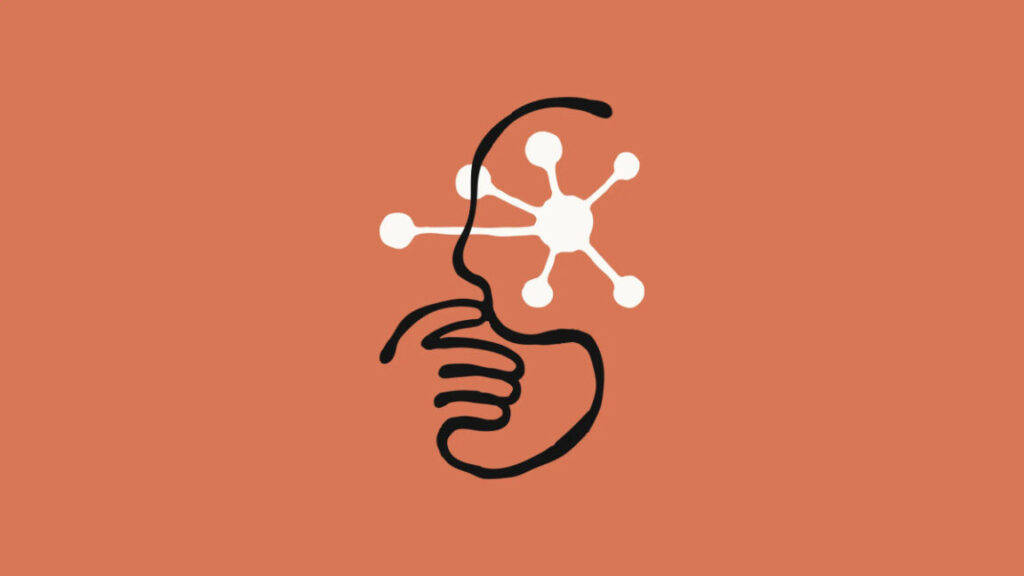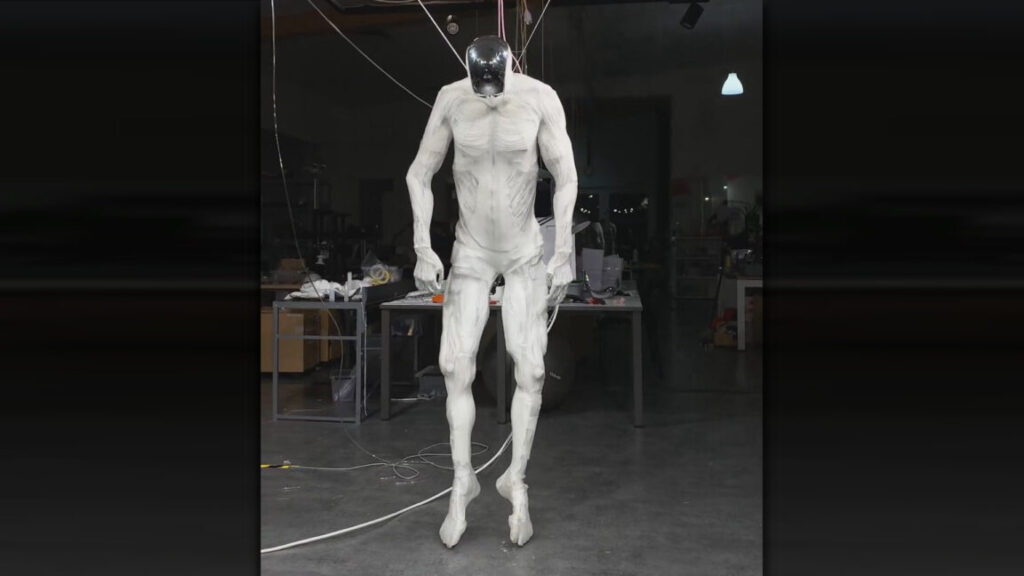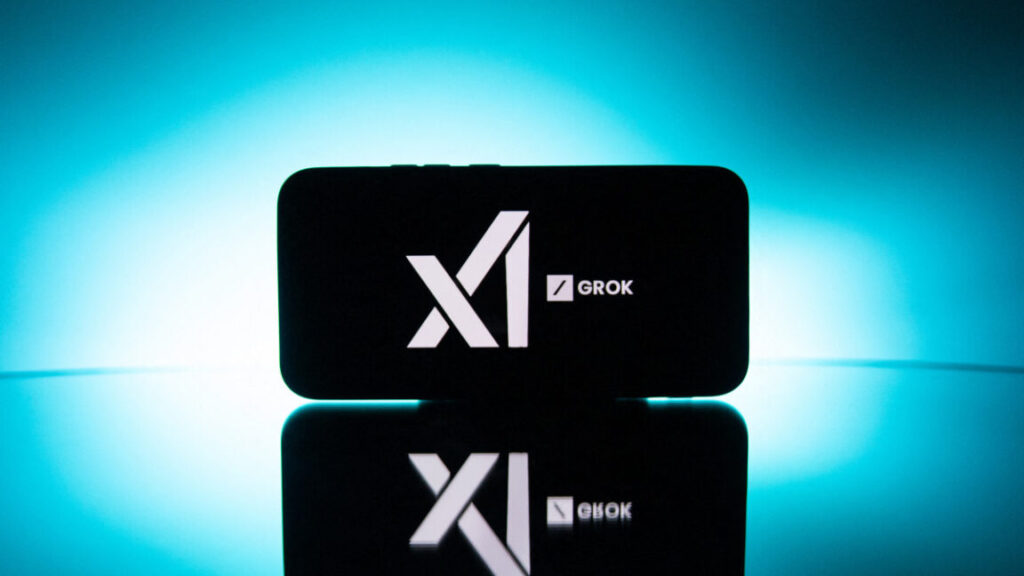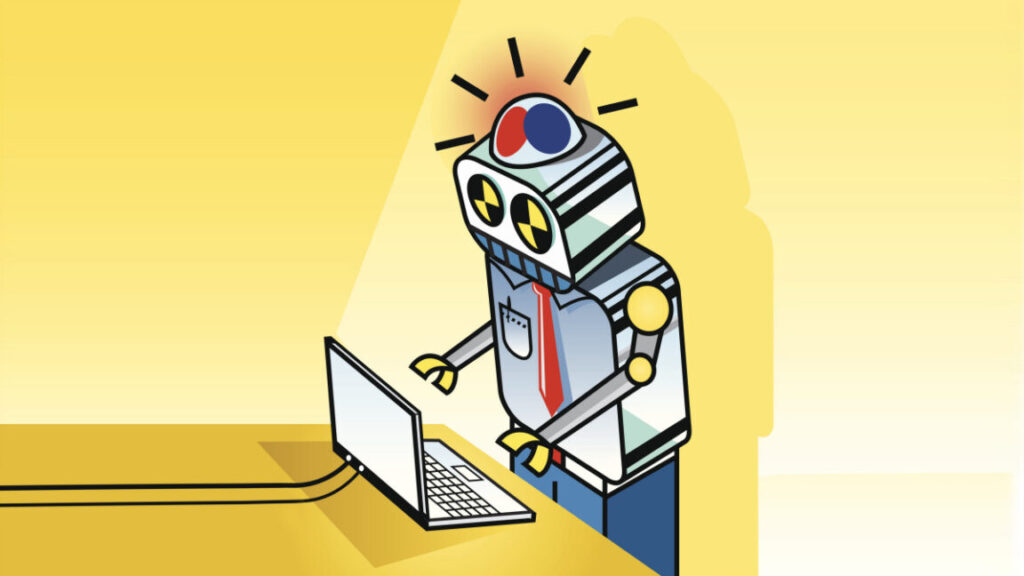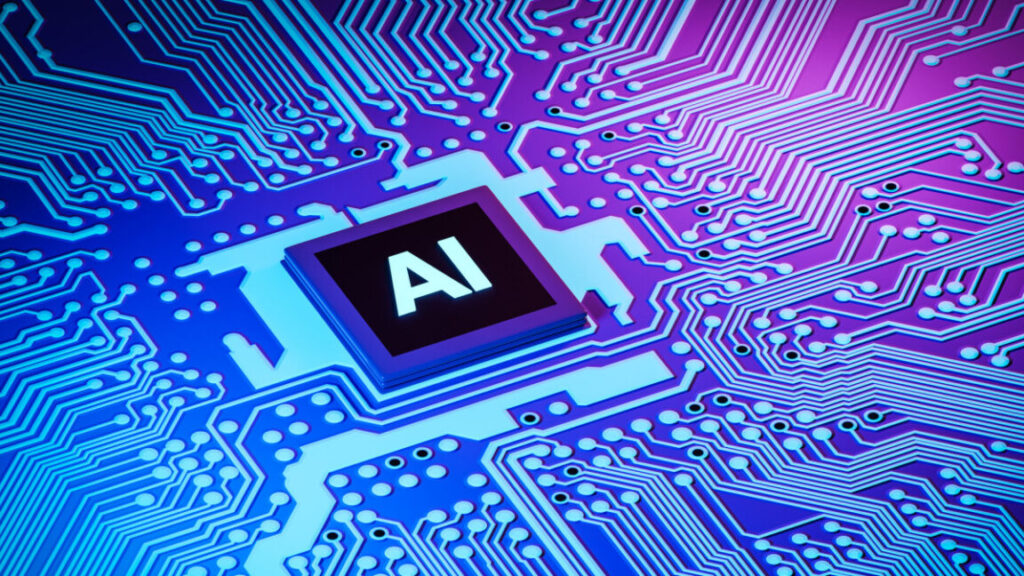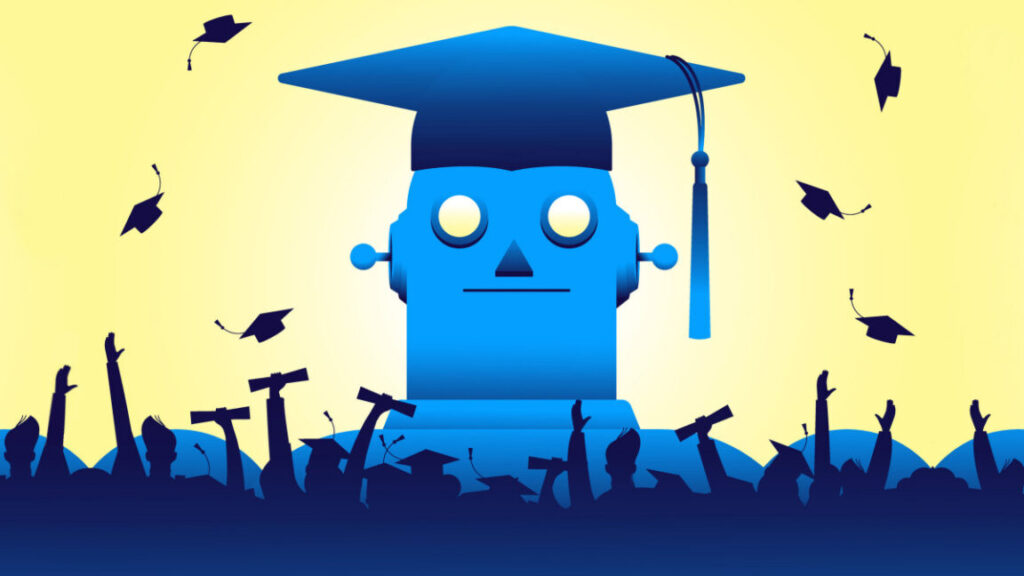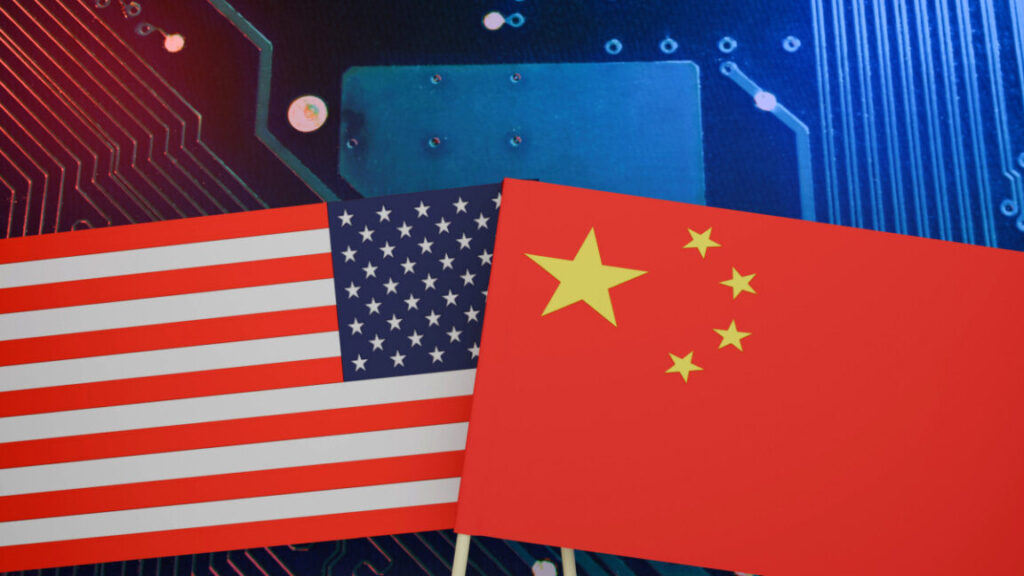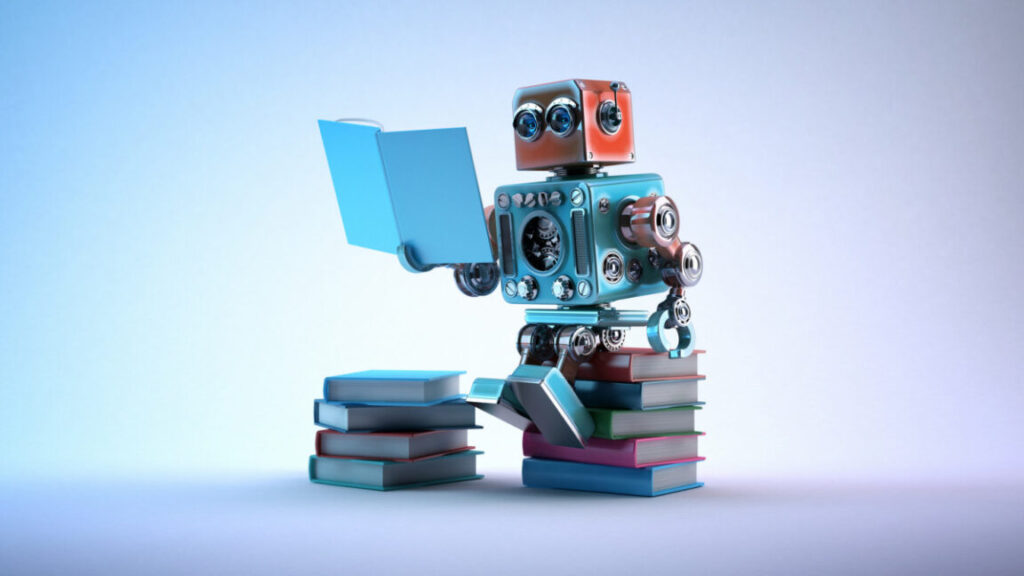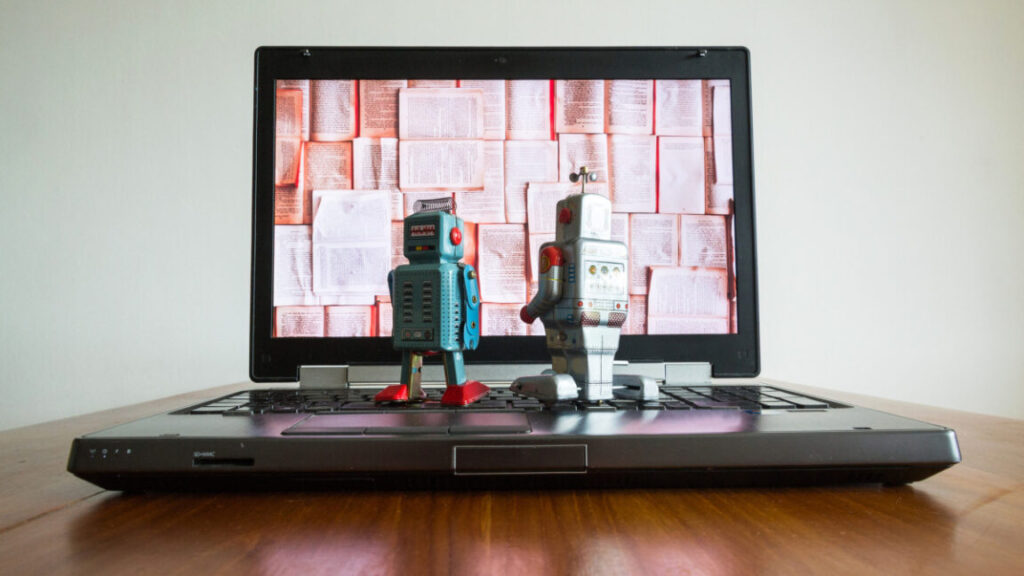Claude 3.7 Sonnet debuts with “extended thinking” to tackle complex problems
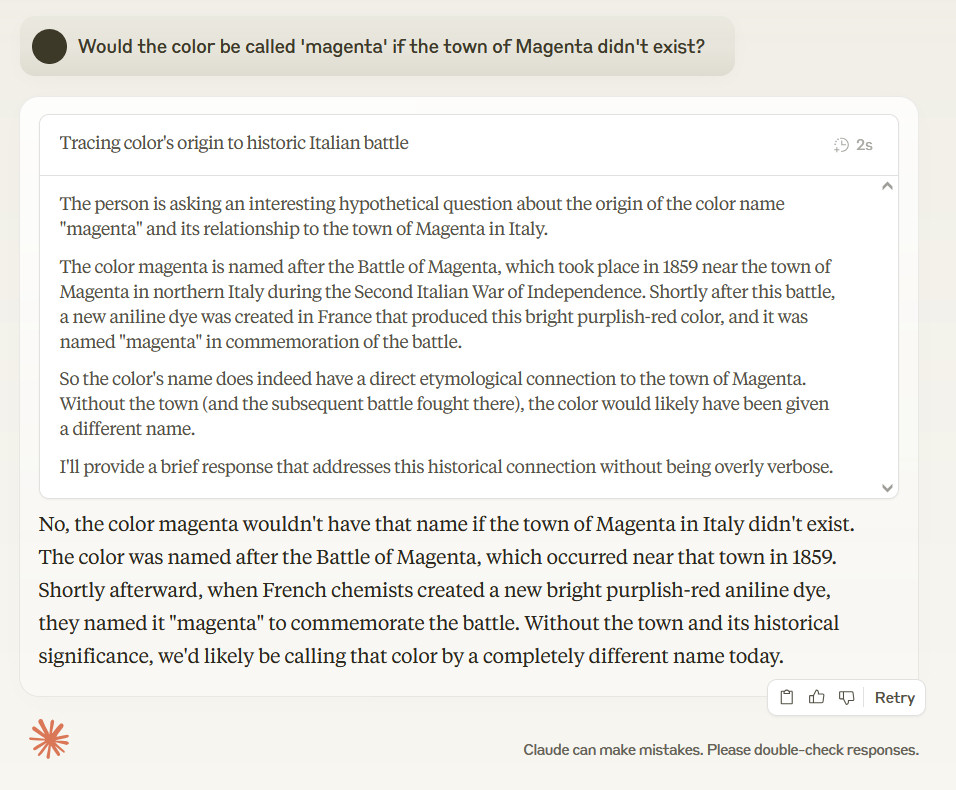
An example of Claude 3.7 Sonnet with extended thinking is asked, “Would the color be called ‘magenta’ if the town of Magenta didn’t exist?” Credit: Benj Edwards
Interestingly, xAI’s Grok 3 with “thinking” (its SR mode) enabled was the first model that definitively gave us a “no” and not an “it’s not likely” to the magenta question. Claude 3.7 Sonnet with extended thinking also impressed us with our second-ever firm “no,” then an explanation.
In another informal test, we asked 3.7 Sonnet with extended thinking to compose five original dad jokes. We’ve found in the past that our old prompt, “write 5 original dad jokes,” was not specific enough and always resulted in canned dad jokes pulled directly from training data, so we asked, “Compose 5 original dad jokes that are not found anywhere in the world.”
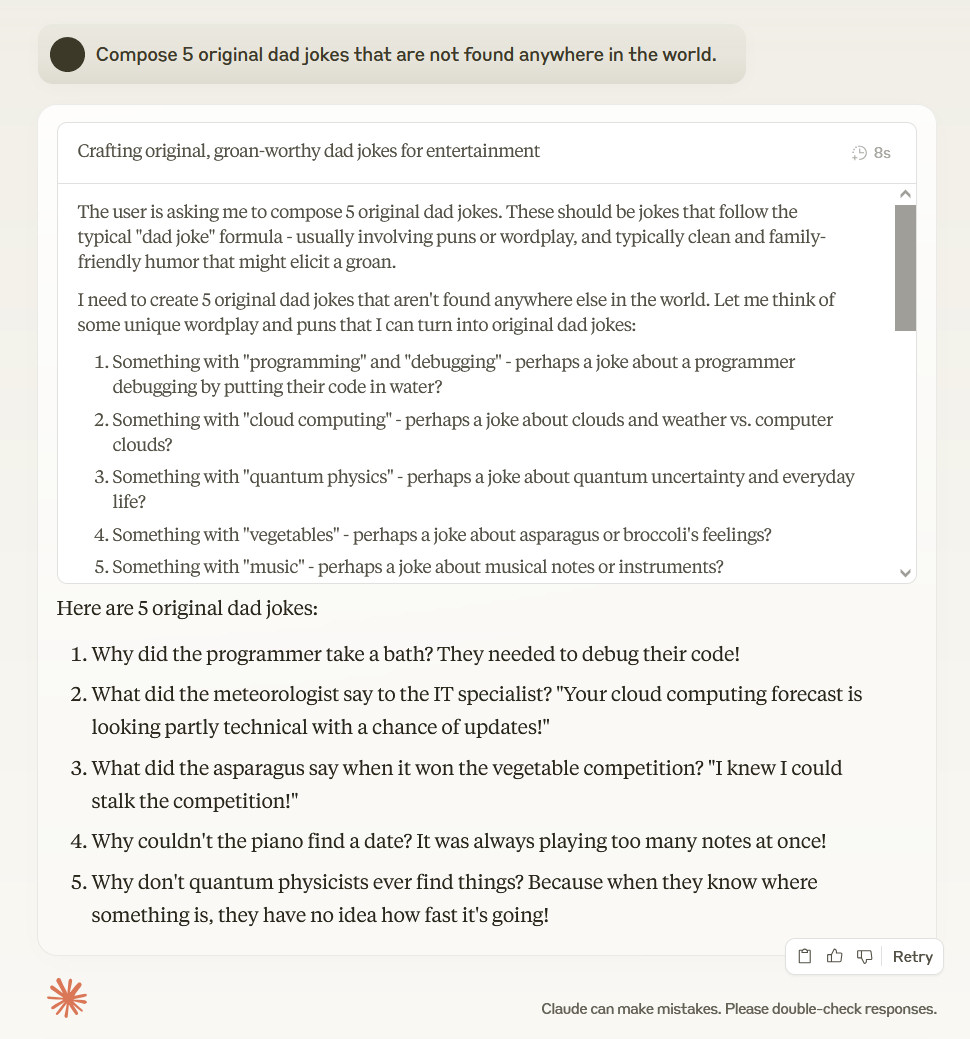
An example of Claude 3.7 Sonnet with extended thinking is asked, “Compose 5 original dad jokes that are not found anywhere in the world.” Credit: Benj Edwards
Claude made some attempts at crafting original jokes, although we’ll let you judge whether they are funny or not. We will likely put 3.7 Sonnet’s SR capabilities to the test more exhaustively in a future article.
Anthropic’s first agent: Claude Code
So far, 2025 has been the year of both SR models (like R1 and o3) and agentic AI tools (like OpenAI’s Operator and Deep Research). Not to be left out, Anthropic has announced its first agentic tool, Claude Code.
Claude Code operates directly from a console terminal and is an autonomous coding assistant. It allows Claude to search through codebases, read and edit files, write and run tests, commit and push code to GitHub repositories, and execute command line tools while keeping developers informed throughout the process.
Introducing Claude Code.
Anthropic also aims for Claude Code to be used as an assistant for debugging and refactoring tasks. The company claims that during internal testing, Claude Code completed tasks in a single session that would typically require 45-plus minutes of manual work.
Claude Code is currently available only as a “limited research preview,” with Anthropic stating it plans to improve the tool based on user feedback over time. Meanwhile, Claude 3.7 Sonnet is now available through the Claude website, the Claude app, Anthropic API, Amazon Bedrock, and Google Cloud’s Vertex AI.
Claude 3.7 Sonnet debuts with “extended thinking” to tackle complex problems Read More »
